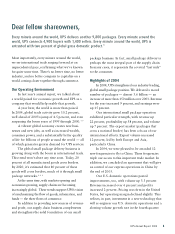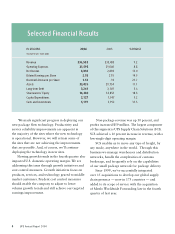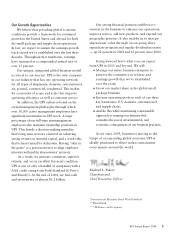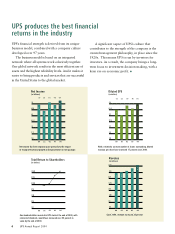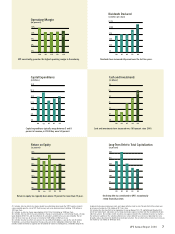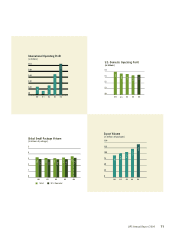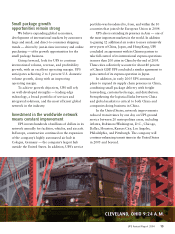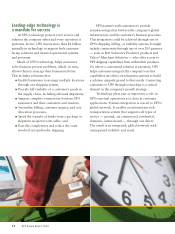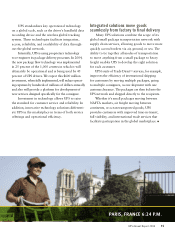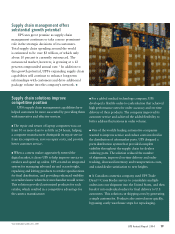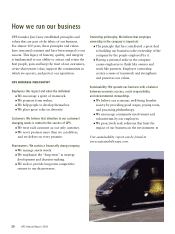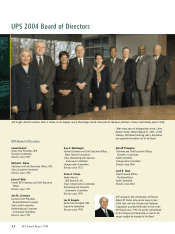UPS 2004 Annual Report Download - page 14
Download and view the complete annual report
Please find page 14 of the 2004 UPS annual report below. You can navigate through the pages in the report by either clicking on the pages listed below, or by using the keyword search tool below to find specific information within the annual report.
The U.S. domestic package operations also
reported a strong year. Ground volume increased
4 percent or 408,000 packages per day. Next day
air volume was essentially flat in 2004 due to the
comparison with the prior year’s unusually high
volume resulting from the mortgage refinancing
boom. Eliminating that impact, air volume
would have increased in 2004. In fact, growth in
overnight package volume was strong, increasing
5.7 percent for the year.
Revenue per piece was up 2.1 percent, reflecting
a rational pricing environment and a strong value
proposition in the form of new products, technology
solutions, and delivery reliability.
U.S. domestic operating margin was slightly
lower in 2004, reflecting the roll-out of new
technology in our domestic operations and the
impact of slowing volume growth. Implemen-
tation of the technology had a negative impact
on profitability of about $150 million in 2004.
LISBON, PORTUGAL 5:24 P.M.
In 2005, it is expected to have a positive net
benefit of $50 to $100 million, even as some
retraining occurs in selected sites and new sites
are deployed. By the end of 2005, approximately
65 percent of UPS drivers are slated to be using
the technology.
Initiatives are in place to address U.S. domestic
volume and margin decline. Growth initiatives
focus on the middle-market customer, with
better alignment of our resources; cross-selling
of integrated solutions successfully used for large
customers; expansion of the product portfolio
with the addition of time-definite, guaranteed
heavy airfreight service; and doubling the rate of
technology integrations through which customers
electronically access UPS shipping systems. In
early 2005, prudent cost control measures were
implemented to adjust to slower volume growth
rates and help ensure achievement of earnings growth
targets. Cost controls are expected to produce about
$200 million in savings in 2005.



